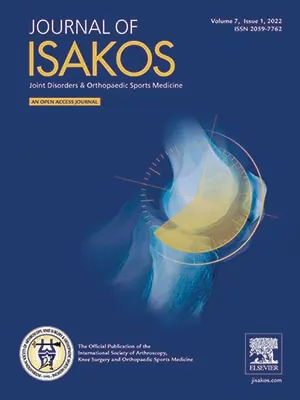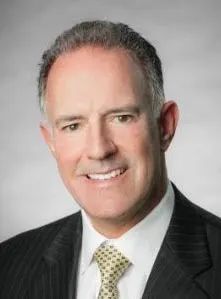Flipping to open access: How a future-focused society switched publishers and business models
2021년 11월 29일
저자: Libby Plummer

ISAKOS CEO talks through the process of transitioning its flagship journal to open access while changing publishers
Caption: Sue Reimbold, CEO and Executive Director ISAKOS, takes you behind the scenes as her society transitions its flagship journal to gold open access.
A growing number of journals and societies are making the switch to full gold open access. One society making that switch with its flagship journal is the International Society of Arthroscopy, Knee Surgery and Orthopaedic Sports Medicine (ISAKOS) 새 탭/창에서 열기.
ISAKOS is a future-focused organization that has built a strong reputation. Its journal was recently accepted into Medline for indexing and approved by Clarivate for inclusion in the Emerging Sources Citation Index — the first step toward consideration for an Impact Factor. At such a pivotal point in its publishing journey, the society is not only moving from a subscription to an open access business model but is also switching from its current publisher to Elsevier while changing its submission platform from ScholarOne to Elsevier’s Editorial Manager.
Sue Reimbold 새 탭/창에서 열기, CEO and Executive Director of ISAKOS, explained the reasons behind the transition:
We recognized the direction that publishing is going in terms of open access, and we wanted to continue to grow our submissions and attract a larger international portfolio of authors. So we really felt that open access was a good move for us.
Another factor is that the society’s flagship publication – the Journal of ISAKOS (JISAKOS) 새 탭/창에서 열기 – is a relatively young journal, established in 2016.
“Those who had the more established long-term subscription model journals were more likely to start up a second journal to offer open access, but we wanted JISAKOS to be our prime publication,” Sue said. “We felt it was in the best interest of JISAKOS to remain our flagship journal and move to open access rather than keep it on the subscription model and adding an additional open access journal.”

A window for change
As the journal was coming to the end of an initial agreement with its publisher, the proposed move to open access presented a perfect opportunity to explore what other publishers could offer. Sue said they evaluated bids from five very strong candidates:
As a larger publisher, Elsevier was very attractive in terms of its submissions system, tools like ScienceDirect and the fact that so many of its publications have attracted large authorships. Also, as a larger publisher, it has more staff and resources available to dedicate to the journal and our transition. Elsevier’s interest in orthopedics as a segment was also a factor for us.
Seeking outside guidance
In 2019 after the editor wrote a column outlining the perils and pitfalls of open access, ISAKOS brought in independent consultant Stephen (Steve) Welch 새 탭/창에서 열기. Steve helped evaluate the proposed open access approach from a neutral standpoint and provided guidance to the ISAKOS leadership team and editor, helping them understand the potential benefits to authors and the journal of moving to open access.
"This has been one of those dream projects for me,” Steve said. “I get to collaborate with a forward-thinking organization like ISAKOS, which is now embracing open access, and they’re partnering with Elsevier, which has a strong orthopedic and sports medicine portfolio and is a leader in open access.
“When you consider that transitioning to open access means all the content will be freely available and accessible, coupled with the journal moving onto the ScienceDirect platform, it magnifies the reach, impact and value of the content the journal is publishing. In addition, Elsevier's global reach and marketing support will accelerate that exposure. Organizations like ISAKOS exist to provide educational resources that benefit medical professionals and their patients.

Stephen Welch
“When you consider that transitioning to open access means all the content will be freely available and accessible, coupled with the journal moving onto the ScienceDirect platform, it magnifies the reach, impact and value of the content the journal is publishing. In addition, Elsevier's global reach and marketing support will accelerate that exposure. Organizations like ISAKOS exist to provide educational resources that benefit medical professionals and their patients.
“So this transition supports the mission of ISAKOS and its journal, the authors who publish in the journal, and the audiences who will have access to this world-class medical content. And for Elsevier, they have a phenomenal addition of a global societal publication that bolsters their open access footprint. It's a perfect example of a win-win situation."
In mid-2020, the Journal of ISAKOS Board of Trustees agreed to move forward with the process of flipping to open access. The transition started early in 2021 and will take effect on January 1, 2022.
Amid challenges, the pandemic has led to an easier transition
The pandemic has proved challenging for ISAKOS in various ways, including the rapid launching of webinars, and switching the dates of the society’s Congress before making it a virtual event.
However, in terms of the journal transition, it has actually enabled the society to make a number of moves it may have been otherwise hesitant to make. With so many members working from home, Sue explained, they halted print distribution of the journal and went online after its second issue of 2020:
Despite some concerns over whether our members would access and value their journal if offered exclusively online, with so many of our members working from home and accessing content virtually during the pandemic, we found that this was not a problem.
The shift to home working also meant the leadership was more accessible, which made the decision-making elements of the transition much easier. Sue noted:
Orthopedic surgeons tend to be very busy, and we work with leadership that is the best in their field and located all over the world. The fact that they were extremely available during a time when we were making some big decisions was really very helpful for us.
The home-based workforce may have also impacted submissions and science progression in the society’s sector as a whole. Article submissions for JISAKOS doubled in 2020 compared to 2019, and the trend has continued into 2021.
“A good fit from the beginning”
Sue described the transition to Elsevier as publisher of JISAKOS so far as “surprisingly easy”:
Working with Elsevier felt like a good fit from the beginning – not just in terms of the tools and scope that Elsevier is able to bring to the table, but also the fact that the team that we work with on a daily basis is as excited about the journal as we are.
I also judge it just in terms of my team's satisfaction and their experience working with the resources of Elsevier, which has been excellent. I'm so impressed with Elsevier’s ability to meet our high expectations for this transition.
The team at Elsevier has relished the chance to work on the transition of a thriving journal that continues to strengthen its position. “We are very humbled and proud to be able to work with ISAKOS,” said Carl Schwarz 새 탭/창에서 열기, Elsevier’s Senior VP of Health and Medical Sciences. “As partners, we have developed an open access plan that enables both ISAKOS and Elsevier to deliver on their missions to improve health outcomes. As such, we all benefit from this newly forged partnership.”
After the new agreement takes effect, the teams from ISAKOS and Elsevier plan will work together on strategic planning for the future of the journal.
Advice for other societies
What advice would Sue give to other societies that are looking to take their journals to the next level?
“One of the things that has been so helpful for us is having brought on a society consultant,” she said. “Crucially, we also retained our consultant after we selected our new publisher, and he’s working with us on the transition. Having Steve on board has meant that we have been able to focus on the ongoing editorial development of the journal while he helps ensure that the publisher and systems transition stays on track.”
Having the board play a central role is also vital for a smooth and successful transition. “Ensuring that the transition is a board-driven decision and that they are brought along every step of the way in the decision-making has been key for us, and I think it has accelerated the process,” Sue said. “Sometimes it can be driven entirely by the editorial team, but I think when you allow leadership to play a larger role, it’s in the best interest of the organization, and it’s better for everyone.
“The pandemic has been a scary time for everyone, but it has also opened the door to new opportunities,” she added. “In our case, ISAKOS leadership walked right through it, taking the organization and the journal to where it needs to go in the future.”
기여자

LP